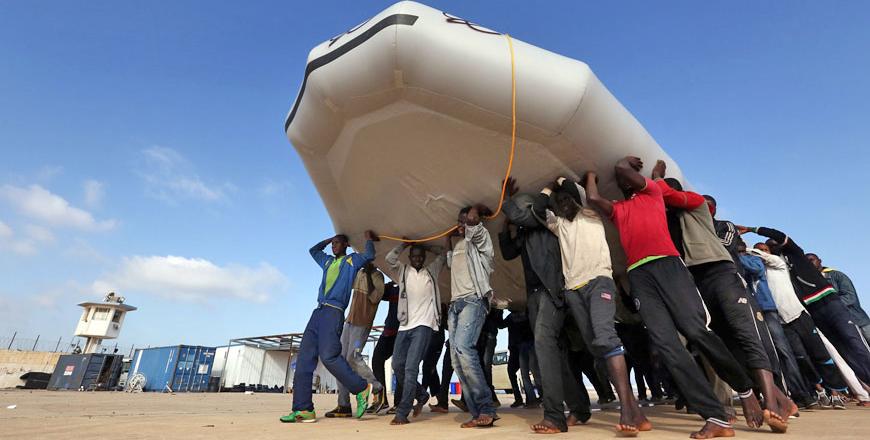You are here
EU curbs rubber dinghy sales to Libya to stop migrants
By AFP - Jul 18,2017 - Last updated at Jul 18,2017

Migrants with a child disembark from the Italian rescue ship Vos Prudence run by NGO Medecins Sans Frontieres as it arrives in the early morning of Friday, in the Port of Salerno carrying 935 migrants, including 16 children and 7 pregnant women rescued from the Mediterranean sea (AFP photo)
BRUSSELS — The European Union on Monday adopted limits on the export of inflatable boats to Libya in a bid to make it harder for smugglers to send migrants to Europe.
The decision by the foreign ministers of the 28 EU states, which also covers outboard motors, is the latest to help a chaotic and violence-torn Libya stem the flow of migrants to Italy, now the main route to the bloc.
"We took a decision to introduce restrictions from today onwards on the export and supply to Libya of the inflatable boats and motors," EU Foreign Policy Chief Federica Mogherini said.
"These are devices are used by traffickers for smuggling activities. This decision we have taken on the European Union level will help make their businesses and lives even more complicated," the former Italian foreign minister told reporters.
An EU statement said there will now be a legal basis to block the supply of dinghies and outboard motors to Libya if there are "reasonable grounds" to suspect they will be used by people smugglers and human traffickers.
The restrictions will also apply to such goods if they are transiting through the EU to Libya — a move which would in theory affect China where many are manufactured.
Fishermen and others who have legitimate reasons to use the dinghies and motors will still be able to import them, the council said.
In practice, EU countries could deny licenses to import-export businesses suspected of supplying smugglers, according to EU sources.
The foreign ministers meanwhile extended until the end of 2018 an EU mission to help Libya re-establish effective controls mainly at its southern borders where sub-Saharan African migrants first arrive.
Related Articles
GARABULLI, Libya — At least ten migrants have died after their Europe-bound boats sank off Libya's coast and some 100 people are missing, co
ROME — Rival bands of traffickers are fighting over the lucrative migrant business in Libya and even intercept boats to extort the passenger
TRIPOLI — After a flurry of boat departures that sent hundreds of migrants to their deaths in the Mediterranean, survivors told police they


















